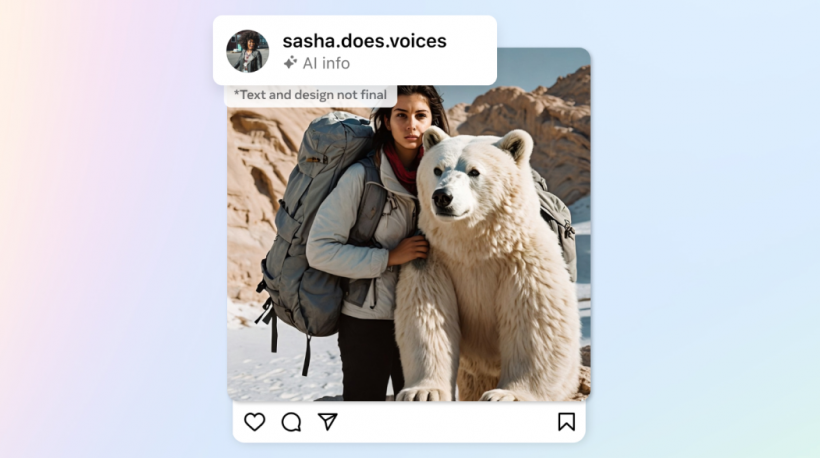Meta, the parent company of Facebook and Instagram, has announced a significant expansion of its AI image labeling system in an effort to combat the increasing amount of AI-generated misinformation from its platforms.
This move aims to detect synthetic imagery created by competing generative AI tools, which is an important step in combating the spread of deceptive content on social media platforms (via TechCrunch).

Meta Broadens AI Image Labeling to Detect Rival Synthetic Images Across Facebook, Instagram
Meta's Response to Rampant AI Content
Meta's decision comes amidst growing concerns about the proliferation of AI-generated content, which can often be indistinguishable from authentic images and videos.
With the rise of sophisticated AI tools, the distinction between real and synthetic content has become increasingly blurred, posing significant challenges for content moderation and trustworthiness online.
The expanded labeling initiative will encompass not only images generated by Meta's own AI tool, "Imagine with Meta," but also those produced by competitors' generative AI technologies.
This means that AI-generated content from sources such as Google, OpenAI, Microsoft, Adobe, Midjourney, and Shutterstock will be subject to detection and labeling on Facebook, Instagram, and Threads.
Read Also: Roblox Brings Real-Time AI Chat Translator to Connect International Gamers
Labelling Human and Synthetic Content
Meta President Nick Clegg emphasized the importance of transparency in addressing the issue of AI-generated content. "As the difference between human and synthetic content gets blurred, people want to know where the boundary lies," Clegg stated in a blog post announcing the expansion.
"We do that by applying "Imagined with AI" labels to photorealistic images created using our Meta AI feature, but we want to be able to do this with content created with other companies' tools too."
The company's approach to identifying AI-generated imagery relies on a combination of visible markers and invisible watermarks embedded within image files.
By collaborating with industry partners and adhering to common technical standards, Meta aims to enhance the detection capabilities of its AI systems, thereby improving the accuracy of content labeling.
Challenges Ahead
Despite these efforts, Meta recognizes the inherent challenges of detecting AI-generated video and audio content. Videos and audio files, unlike images, do not have standardized markers, making it difficult to identify synthetic content.
Nonetheless, Meta is looking into solutions like Stable Signature, which is an invisible watermarking technology that can be integrated directly into the image generation process.
In addition to technical measures, Meta is making policy changes to address the issue of AI-generated content. Users must disclose when sharing AI-generated video or audio content, with penalties for noncompliance. This proactive approach aims to reduce the risks associated with deceptive media and protect the integrity of online discourse.
External stakeholders, including the Oversight Board, have questioned Meta's efforts, calling for more clarity in the company's content moderation policies. They argue that Meta's focus on AI-generated content overlooks larger issues such as misinformation and digital manipulation.
Recently, a video of President Joe Biden went viral on Facebook, sparking controversy because it depicted the official as a "pedophile" and showed inappropriate scenes.
Initially, it was not removed, and Facebook defended its position on the video, claiming that it did not violate any platform policies but was deemed inappropriate after a lengthy and careful review.
Stay posted here at Tech Times.
Related Article: Fake Biden 'Pedophile' Video on Facebook Now Considered Malicious, Meta Oversight Board Rules










